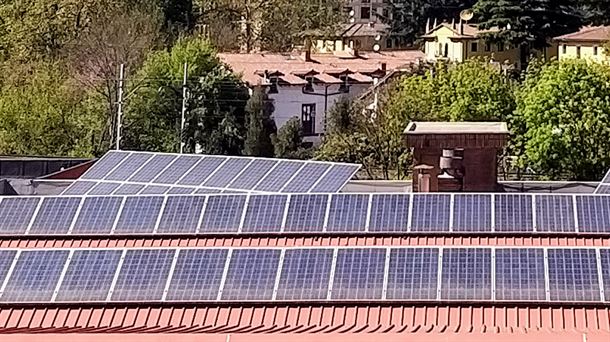We tell you all the steps you must follow to be able to have a photovoltaic installation at home.
Euskaraz irakurri: Eguzki panelak jarri nahi ditut auzokoen erkidegoan edo etxebizitza familiabakarrean: zer egin behar dut?
It counts Marcos García, commercial manager of the residential sector of the company Zuia Engineering, of Vitoria-Gasteiz: the number of requests for information received on photovoltaic installations in neighborhood communities and in single-family homes “it has quadrupled in the last year, and doubled since last May”. Joshua Salazar, manager of the company Ekidom Renewable Energies, de Berriz, indicates that the increase compared to two years ago “is 500%. In 2021 we will double our turnover, and this year we will also do so, compared to 2021.” The increase in the price of electricity, as well as the energy crisis and the uncertainty with which the coming winter is presented, explain this increase.
Thus, more and more people consider put solar panels in their homes, and more and more people do it; but,which are the steps to follow to have this installation in our house? Let’s see it.
1. Although it is less common, because, according to Josu Salazar, most of the clients are owners of single-family houses or farmhouses, if you live in a community of neighbors and you want to explore the installation of solar panels, you need get community permission to carry out the installation. A Meeting must be convened, and the Horizontal Property Law requires that one third of the neighbors agree. Of course, Marcos García points out that it is advisable that a simple majority support the initiative. When the initiative starts from a single-family home, the process to follow, the paperwork, is less complex.
2. Once you have obtained the support of the community of neighbors, or your family, if you live in a house, farmhouse or similar, the next step is go to an installation companywhich will carry out a preliminary study and contact the local council to request the municipal building license, and the Basque Energy Entity (EVE) or the Consistory itself, to process the corresponding subsidies.
It is important to know, among other things for what it means for peace of mind, that the installation company is the one who is going to be in charge of this work of processing the permits. Marcos García points out that the aid granted by the EVE is very important, and further explains that the Basque Energy Entity has significantly reduced the time it takes to respond to each interested party. The City Councils, for their part, sometimes give rebates on the Real Estate Tax (IBI) or exemptions on the municipal building license, explains Josu Salazar.
The previous study takes into account the electrical consumption of the home (community of neighbors or single-family house) and also where the house is located (for example, on the coast or inland, because the number of hours of sunshine per year is not the same). There is an official computer application, a software, that helps to do it. In this regard, the EVE, on its website, details the three zones into which the Basque Autonomous Community is divided, according to the potential each one has for harnessing solar energy: they are the coastal zone, the intermediate zone, which It is located in the most central area of Euskadi, and the interior zone, to the south of the CAV, in Rioja Alavesa.
3. Formalization of the contract with the installation company. This is done after knowing the amount of aid provided by the institutions. A person responsible for assembly details the feasibility of the work, and informs the client about everything that needs to be done.
Four. Execution of the work for the photovoltaic installation: Marcos García, from Zuia Engineering, places the time required for the installation to be ready in a few days, usually in less than a week. Of course, as Josu Salazar, from Ekidom Renewable Energies, recalls, at this time there may be problems with the availability of the components, since there are supply difficulties.
5. Care and maintenance of the installation: Josu Salazar points out that the panels must be clean, although the rain itself usually takes care of that: “Right now, everything arrives with monitoring,” he indicates. The guarantee of the panels, underlined by Ekidom Energías Renovables and Zuia Ingeniería, is 25 years, “but its useful life can exceed 40”, indicates Josu Salazar.
Finally, in a photovoltaic installation, Marcos García explains, there are three devices: solar panels, which have, as we have said, a 25-year guarantee; the inverter, which transforms the direct current from the solar panels into alternating current for use at home, has a ten-year guarantee; and the battery, also with a ten-year guarantee, stores the energy accumulated and not used during the day. That energy can be used for the times when the panels do not receive sunlight and also to deliver it to the electrical network, in exchange for an amount of money.
Source: Eitb
With a background in journalism and a passion for technology, I am an experienced writer and editor. As an author at 24 News Reporter, I specialize in writing about the latest news and developments within the tech industry. My work has been featured on various publications including Wired Magazine and Engadget.

